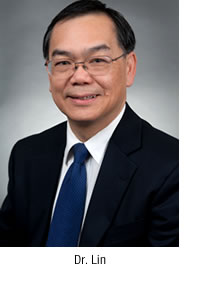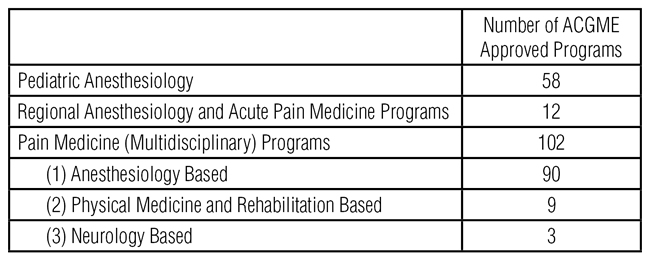Editor's Corner
Training Specialists in Pediatric Pain Medicine
 By Yuan-Chi Lin, MD, MPH, FAAP; Francis Kraemer, MD; Meredith R. Brooks, MD, MPH
By Yuan-Chi Lin, MD, MPH, FAAP; Francis Kraemer, MD; Meredith R. Brooks, MD, MPH
The training of medical specialists in anesthesiology and pain medicine has been evolving in the past few years. The American Board of Anesthesiology and American Board of Pediatrics approved five-year combined residency training programs in 2009. There are fourteen programs that have been approved by Accreditation Council for Graduate Medical Education (ACGME) for the combined anesthesiology and pediatric training. Currently, the Anesthesiology/Internal Medicine as well as Anesthesiology/Emergency Medicine also offer combined residencies training.
The ACGME has also approved several subspecialties in anesthesiology training. Examples include adult cardiothoracic anesthesiology, clinical informatics, critical care medicine, regional anesthesiology and acute pain medicine, obstetric anesthesiology, pain medicine (multidisciplinary), hospice and palliative medicine, sleep medicine, and pediatric anesthesiology.

Recently, there have been more pediatric pain programs offering training. In this issue of the SPPM Newsletter, we invited all the available training programs in pediatric pain medicine to provide a brief description of their facilities, curriculum, accreditation status, along with their web link. It is exciting to see more and more physicians interested in pediatric pain medicine and more available training programs. This is very important for our mission in delivering care, educating clinicians and promoting future research in pediatric pain medicine. We salute our colleagues for their dedication to training a future generation of pediatric pain specialists.
Available Training Programs in Pediatric Pain Medicine
- Boston Children’s Hospital; Boston, Massachusetts
- Cincinnati Children’s Hospital Medical Center; Cincinnati, Ohio
- Children’s Hospital of Colorado; Denver, Colorado
- Children’s Hospital of Wisconsin; Milwaukee, Wisconsin
- Nationwide Children’s Hospital; Columbus, Ohio
- Stanford Children’s Health; Stanford, California
- University of Washington; Seattle, Washington
The American Academy of Pediatrics (AAP) is interested in expanding the opportunity for pediatricians to train in Pain Medicine. In this issue of our SPPM Newsletter, Dr. Raeford Brown, Jr. expresses an opinion on offering fellowship training in pain medicine to pediatricians. In addition, Dr. Brown clarifies the views of AAP and the FDA concerning the administration of codeine and opioids in the pediatric population.
Multimodal and non-opioid pharmacological approaches have always been an integral part of our pain practice, and as a result of the opioid crisis, have become even more important. In this issue, Dr. Bobbie Riley provides SPPM members with an excellent review of Systematic Non-Opioid Analgesia for Postoperative Pediatric Pain. In addition, Dr. Lis Santana has written an excellent current literature review of pediatric chronic pain and palliative pain management.
Dr. Scott Dingeman and the Education Committee have worked hard on creating an outstanding Annual Meeting program, and Dr. Dingeman has written a wonderful overview of the SPPM 5th Annual Meeting, which will be held on March 22, 2018 at JW Marriott Desert Ridge in Phoenix, Arizona. This meeting will focus on scientific updates and new challenges in pediatric pain medicine. We are all excited about the event and hope to see you all in Phoenix.
We love to have our members contribute to our SPPM Newsletter. Please feel free to reach out to us with any questions, thoughts, suggestions, or comments.
If you have any questions or comments, please feel free to contact:
Yuan-Chi Lin, MD, MPH, FAAP
[email protected]


